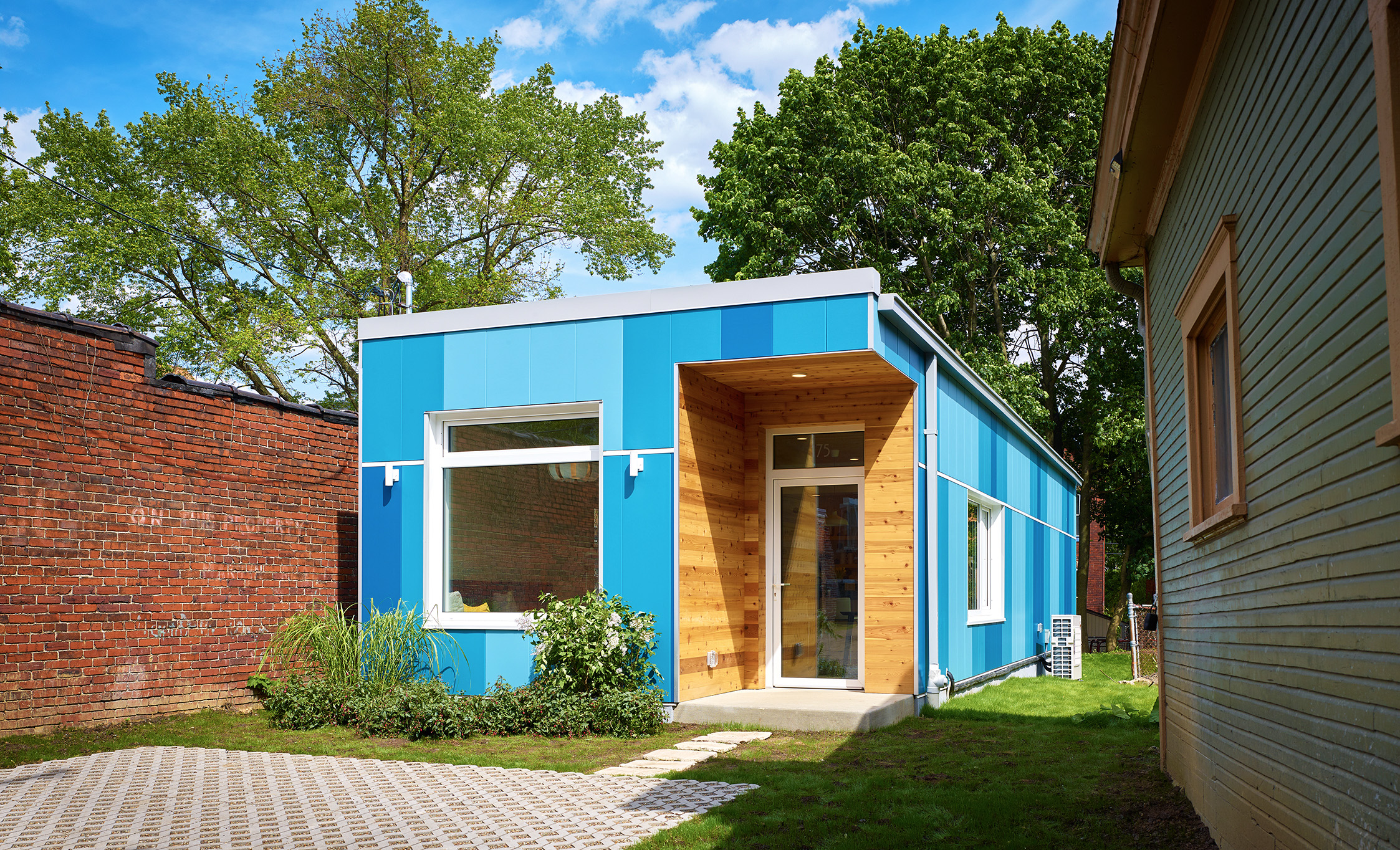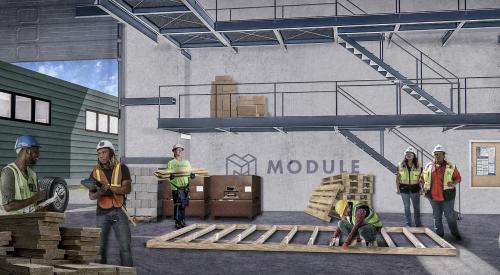As a cost- and labor-saving method of homebuilding, modular construction has become something of a pandemic-era blessing. More builders are adopting its methods—but what should they know before getting started with offsite construction?
The New Home Trends Institute (NHTI) brought offsite experts together during a webinar to discuss the catalysts driving modular construction forward. From the webinar, NHTI has devised six factors to consider for offsite construction.
WHAT IS A MODULAR HOME?
A modular (or ‘prefabricated’) home is one that is built by combining separate pieces/units together to form a connected structure. There are many potential benefits that come from utilizing modular design, such as swapping out sections of a house, or adding a backyard accessory dwelling unit (ADU).
Some startups are even combining the utility of prefabrication with the innovation of 3D printing. The applications of modular construction seem endless. For builders looking to start a modular project, what should they take into consideration?
6 FACTORS THAT INFLUENCE MODULAR ADOPTION
From the New Home Trends Institute by John Burns Real Estate Consulting, here are six factors that builders should consider when deciding to utilize offsite construction.
1. Desire to control the building process
Offsite construction involves building individual housing modules in a contained, climate-controlled environment. A factory setting allows for more precise building techniques, but builders must make sure each unit is strong enough to be transported.
According to Riverview Homes, a Pennsylvania-based modular and mobile homes developer, site-built homes may encounter certain problems during the construction process—such as exposure to damaging weather conditions—that could alternatively be prevented through offsite construction.
Amid the notorious pandemic-era problems in the supply chain, builders have to look for a more streamlined way to secure their materials. One way that can be achieved is by having a single offsite supplier, instead of procuring onsite products from multiple suppliers.
2. Prioritization of speed and quality
With onsite construction, it can take months to order supplies. That longer lead time also means greater price volatility. Onsite construction also takes more time to assemble the materials and erect the structure than offsite construction.
By contrast, it typically takes just days to put up a house built offsite.
Additionally, the availability of labor has gone down, and the cost of it has gone up for builders. The shortages and rising costs of skilled labor in particular have made modular construction more enticing. With modular, much of the skilled labor becomes automated in the factory.
Twenty-four percent of builders said they plan to lessen the impact of the skilled labor shortage by adopting construction practices that use less skilled labor—a figure that’s up from 19% pre-pandemic, according to a survey conducted by Home Innovation Research Labs.
3. Tolerance for higher direct costs
Though modular construction comes with higher direct costs, it’s later offset by the speed of production and less overall waste.
Builders tell Home Innovation Research Labs that they don’t have enough local providers of offsite solutions, so they’d have to pay more to transport offsite materials to their construction sites.
But in the long run, the value of modular homes adjust with the market and will appreciate over time, according to Riverview Homes. Modular buildings can be improved or expanded onsite as well to accommodate owners preferences, increasing its value.
4. Strength of relationships
Having a strong relationship with inspectors and permit authorizers is helpful when dealing with modular construction.
There are a few logistical reasons modular developers have had issues in the past. The draw for building offsite is different, so some banks may be hesitant to lend to a modular project, according to Brian Gaudio, co-founder and CEO, Module.
RELATED: The Modular Mark: Prefab Pros and Cons
Developing positive relationships with municipalities, underwriters, and code officials will impact your success, according to NHTI.
5. Location
It’s hard to accomplish modular adoption without close proximity to a factory or plant. A controlled environment is very beneficial to offsite construction, and builders don’t want their prefabricated units being shipped further than they should.
The ease of coordinating logistically between the onsite and offsite locations is another factor that will impact a builders’ adoption of modular construction.
6. Environmental and health goals
Ultimately, when it comes to environmental and health goals, modular construction provides solutions for both.
Less waste is produced from scrap material, the air is cleaner for workers (due to less dust being kicked up), and the environment is safer. Additionally, the onsite neighborhood is less disturbed by continuous construction noise during the project’s length.















